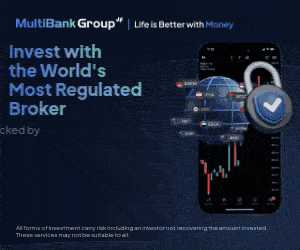The global markets remain caught in a volatile environment as investors digest contrasting policy signals from major central banks. The Bank of England is expected to cut rates by 0.25% today, while the Federal Reserve opted to keep its benchmark rate steady at 4.25%-4.5%. These decisions highlight growing economic uncertainties, including slowing global growth and persistent inflationary pressures. With the BoE expected to stick to a gradual easing cycle and the Fed signaling patience amid rising stagflation risks, investor sentiment remains on edge. Currency and bond markets are also showing clear signs of strain, further fueling market volatility.
Table of Contents
ToggleMonetary Policy Divergence
Bank of England Prepares for Further Cuts
The Bank of England (BoE) is widely anticipated to lower its policy rate today by 0.25%, bringing it to 4.25% from 4.5%. This rate cut would be its fourth since August 2024, reflecting increasing concerns over the UK’s economic fragility. While inflation remains a key issue, falling energy prices and dampened consumer demand have offered some breathing room. Expectations in the market suggest that the BoE may implement three additional rate cuts by the end of 2025, possibly taking the benchmark rate to 3.5%.
Governor Andrew Bailey has repeatedly emphasized the importance of measured action. His cautious tone reflects an uncertain backdrop, dominated by global trade tensions and the economic impact of U.S. tariffs on imports. The BoE also faces inflationary heat from wage pressures, which have consistently outpaced productivity growth. However, several analysts believe a more aggressive approach may be needed should geopolitical risks escalate further.
Fed Opts for Caution Amid Trade Risks
On the other side, the U.S. Federal Reserve decided to hold its key rate at 4.25%-4.5% following its latest meeting on May 7. Fed Chair Jerome Powell stressed a patient approach, underlining the heightened uncertainty created by U.S. trade policies. While economic activity remained robust, Powell noted potential risks of rising inflation and unemployment. These opposing forces leave the Fed in a precarious position.
The Fed’s decision comes amid conflicting economic signals. Inflation, although elevated, has shown signs of moderation. However, headwinds from U.S.-China trade tensions have fueled further uncertainty for businesses. Powell reiterated that achieving price stability remains the Fed’s priority but acknowledged that the path forward would depend heavily on upcoming economic data.
Market Reaction and Implications
Currency Market Under Pressure
The British pound has faced downward pressure, reflecting the BoE’s clear intent to loosen policy. Sterling fell to $1.3282, partly due to diminished yield advantages and broader risk aversion in currency markets. This weaker performance raises concerns about the UK’s import costs, especially energy. Meanwhile, the euro dropped to $1.1297 as the European Central Bank continues to strike a cautious tone on its monetary stance.
Conversely, the U.S. dollar remained resilient, gaining strength against most major currencies. This reflects investor appetite for safe-haven assets amidst geopolitical and economic uncertainty. Currency markets are expected to remain volatile, with trade negotiations and inflation data likely to be pivotal drivers of sentiment.
Bond and Equity Markets See Mixed Trends
The fixed-income markets have also shown varying reactions. U.S. Treasury yields declined, with the benchmark 10-year note slipping to 4.269%. This reflects market expectations that the Fed may consider rate cuts later this year. Conversely, UK gilts have experienced a more muted response ahead of the BoE’s announcement, reflecting skepticism about the depth of the easing cycle.
Equities posted mixed performances globally. U.S. indices, including the S&P 500, rose towards the end of the trading session, buoyed by strength in tech stocks. However, European equities underperformed as investors worried about trade disruptions and weak growth forecasts for major Eurozone economies. The environment remains tricky, with high sensitivity to central bank actions.
Economic Outlook and Conclusions
Growing Concerns Over Stagflation
The diverging policy paths of the BoE and the Fed underscore a troubling economic environment. Central banks are struggling to balance inflation control with the need to support growth. The Fed’s decision to pause rate adjustments reflects concerns about potential stagflation, exacerbated by U.S. tariff policies. Meanwhile, the BoE faces questions about whether its gradual approach is sufficient to counter weak domestic demand and labor market woes.
The risks of stagflation appear increasingly pronounced. Slowing growth and rising global trade barriers are pressuring economies worldwide. For investors, the key focus will likely shift towards how these policies translate into long-term impacts on lending, household spending, and investment patterns. Such challenges reinforce the need for a cautious, balanced outlook in navigating these turbulent times.
Outlook for Markets
Markets are likely to remain volatile in the near term, with currencies, bonds, and equities reacting to shifting policy expectations. While the BoE’s expected rate cuts could support domestic consumption, the overall effectiveness will hinge on broader global developments. Similarly, the Fed’s cautious stance suggests more data-dependent decision-making in the months ahead.
Global investors will closely monitor trade negotiations, inflation trends, and central bank commentary. Economic reports from key markets, including updates on labor conditions and industrial output, will also weigh significantly on market sentiment. The road ahead remains uncertain, with potential shocks likely from any geopolitical upheavals or unexpected economic disruptions.
Final Thoughts
The current mix of cautious policies by the BoE and Fed signifies a challenging macroeconomic landscape. With inflationary and trade-related risks dominating the agenda, markets are bracing for heightened uncertainty. Investors must remain vigilant, balancing short-term considerations with the overarching economic complexities that define 2025.

















